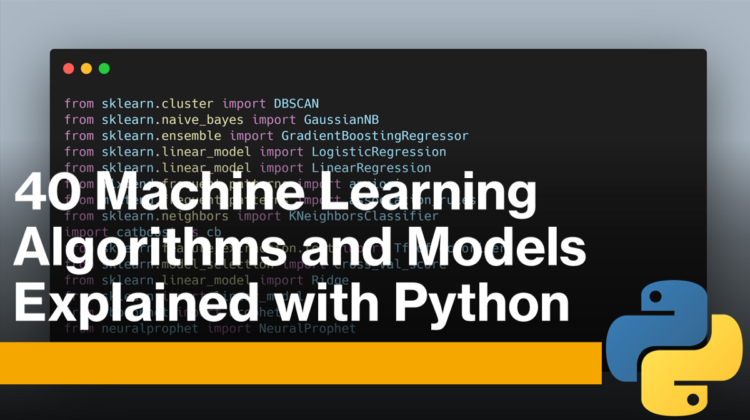
In this article, I will take you through an explanation and implementation of all Machine Learning algorithms with Python programming language.
Machine learning algorithms are a set of instructions for a computer on how to interact with, manipulate, and transform data. There are so many types of machine learning algorithms. Selecting the right algorithm is both science and art.
- DBSCAN Clustering
- Naive Bayes
- Gradient Boosting (Used in implementing the Instagram Algorithm)
- Logistic Regression
- Linear Regression
- Apriori Algorithm
- K Nearest Neighbor
- CatBoost
- SMOTE
- Hypothesis Testing (Commonly used in Outlier Detection)
- Tf-Idf Vectorization
- Cross-Validation
- 4 Graph Algorithms (Connected Components, Shortest Path, Pagerank, Centrality Measures)
- Ridge and Lasso Regression
- StandardScaler
- SARIMA
- ARIMA
- XGBoost Algorithm
- Long Short Term Memory (LSTM)
- One Hot Encoding
- Bidirectional Encoder Representations from Transformers (BERT)
- Facebook Prophet
- NeuralProphet
- AdaBoost Algorithm
- Random Forest Algorithm
- H2O AutoML
- Polynomial Regression
- Gradient Descent Algorithm
- Grid Search Algorithm
- K-Means Algorithm
- Manifold Learning
- Principal Component Analysis
- Decision Trees
- Support Vector Machines
- Neural Networks
- FastAI
- LightGBM
All the above algorithms are explained properly by using the python programming language. These were the common and most used machine learning algorithms. We will update this article with more algorithms soon. I hope you liked this article on all machine learning algorithms with Python programming language. Feel free to ask your valuable questions in the comments section below.
